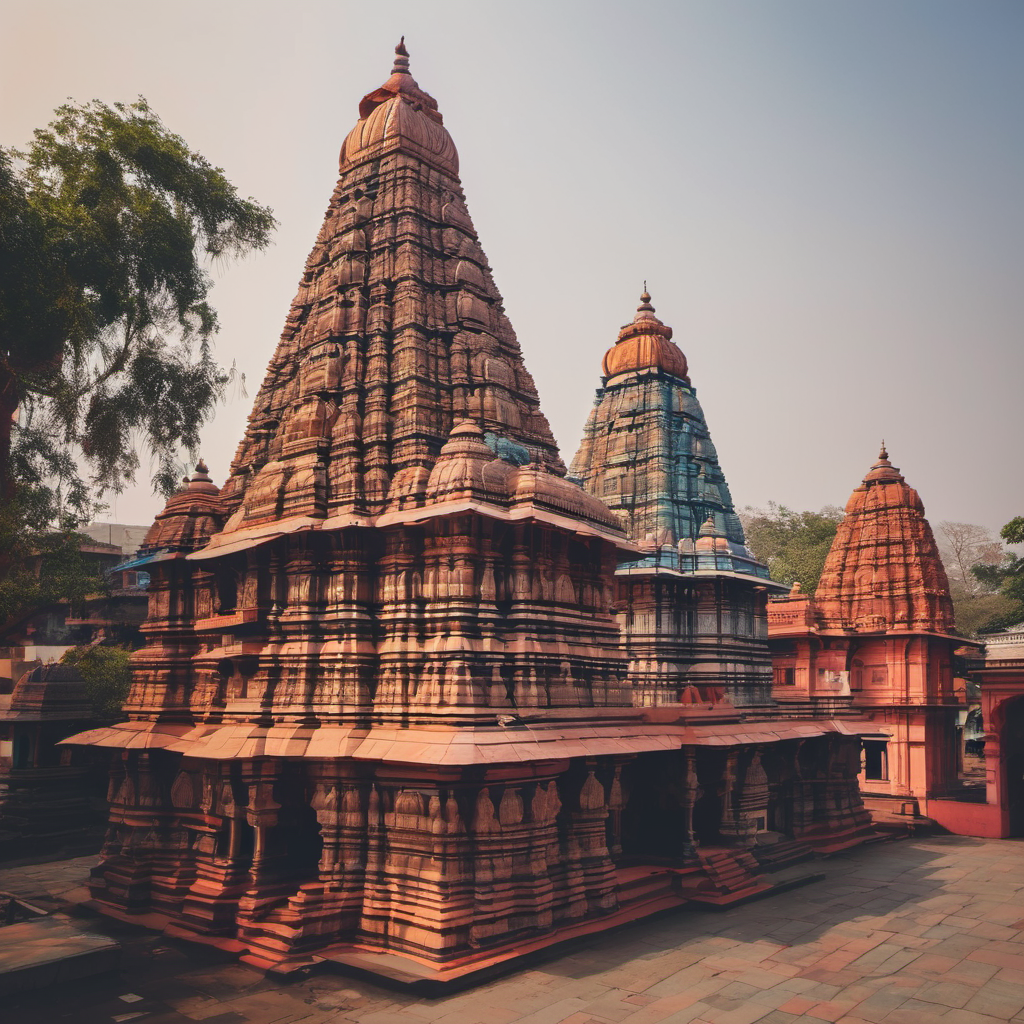1.Vaishno Devi Temple

The Vaishno Devi Temple is a revered Hindu shrine located in the Trikuta Mountains of the Indian state of Jammu and Kashmir. It is dedicated to the Hindu goddess Vaishno Devi, also known as Mata Rani or Vaishnavi.
Pilgrims from all over India and abroad visit the temple to seek the blessings of Vaishno Devi. The journey to the temple usually starts from the base camp at Katra, and pilgrims have to trek uphill for approximately 13 kilometers to reach the main shrine. Alternatively, some visitors choose to ride ponies or take palanquins carried by porters.
The temple complex consists of three rock-cut caves symbolizing the three forms of the goddess: Maha Kali, Maha Lakshmi, and Maha Saraswati. Inside the cave, devotees can see the naturally formed rock structures that represent the various deities.
The Vaishno Devi Temple holds immense religious significance and is considered one of the holiest pilgrimage sites in Hinduism. It is believed that Mata Vaishno Devi fulfills the wishes of her devotees who visit her shrine with utmost faith and devotion.
The temple attracts millions of pilgrims every year, especially during the Navratri festival, when the pilgrimage reaches its peak. The journey to Vaishno Devi is not just a physical trek but also a spiritual one, offering devotees an opportunity for self-reflection, prayer, and devotion.
.
2.Raghunath Temple

The Raghunath Temple is a renowned Hindu temple located in Jammu, India. Dedicated to Lord Rama, it is one of the largest temple complexes in North India and holds significant religious importance for devotees.
The temple complex consists of seven separate temples, each dedicated to a different deity. The main deity of the temple is Lord Rama, while the other temples within the complex are dedicated to various Hindu gods and goddesses such as Lord Shiva, Lord Hanuman, and Goddess Sita.
The architecture of the Raghunath Temple is characterized by its distinctive shikhara (spire) and intricate carvings. The temple complex is adorned with beautiful sculptures and decorations, showcasing the rich cultural heritage of the region.
The Raghunath Temple is not only a place of worship but also a center of religious and cultural activities. Devotees flock to the temple to offer prayers, seek blessings, and participate in various rituals and ceremonies.
The temple is particularly busy during religious festivals such as Ram Navami and Diwali, when devotees from all over the country come to pay their respects to Lord Rama and seek his blessings.
.
3.Mubarak Mandi Palace

Mubarak Mandi Palace, located in Jammu, India, is a historic palace complex that served as the royal residence of the Dogra kings. Built in the 19th century, it is an architectural marvel blending Rajasthani, Mughal, and European styles.
The palace complex comprises several buildings, including the Darbar Hall, Pink Palace, and Gol Ghar, each showcasing intricate craftsmanship and grandeur. It served as the political and cultural center of the Dogra dynasty and witnessed many important events in Jammu’s history.
Today, Mubarak Mandi Palace is a museum preserving artifacts, paintings, and galleries reflecting the rich heritage and culture of Jammu. Visitors can explore the opulent interiors, royal chambers, and ornate courtyards, gaining insight into the region’s royal past.
The palace complex also hosts cultural events, exhibitions, and festivals, attracting tourists and history enthusiasts from around the world. Mubarak Mandi Palace stands as a symbol of Jammu’s architectural heritage and royal legacy, offering a glimpse into its majestic past.
.
4.Bahu Fort and Garden

Bahu Fort and Garden, situated in Jammu, India, is an ancient fortification and garden complex overlooking the Tawi River. The fort dates back to the 19th century and is believed to have been originally built by Raja Bahulochan, a Dogra king.
The fort offers panoramic views of the city of Jammu and the surrounding landscape. It served as a defensive structure to protect the city from invasions and is characterized by its sturdy walls and imposing architecture.
Adjacent to the fort is the Bahu Garden, a beautifully landscaped garden adorned with flower beds, fountains, and lush greenery. The garden provides a serene and picturesque setting for visitors to relax and enjoy nature.
Bahu Fort and Garden are popular tourist attractions in Jammu, attracting visitors with their historical significance and natural beauty.
.
5.Amar Mahal Palace

The Amar Mahal Palace, located in Jammu, India, is a historic palace known for its exquisite architecture and cultural significance. Built in the 19th century, the palace was originally the residence of Raja Amar Singh, a Dogra king.
The palace is renowned for its stunning red sandstone architecture, which combines elements of Rajasthani and European styles. Its grand facade, adorned with intricate carvings and ornate balconies, is a testament to the opulence of the Dogra dynasty.
Today, the Amar Mahal Palace has been converted into a museum, showcasing artifacts, paintings, and sculptures that depict the history and culture of Jammu and Kashmir. Visitors can explore the palace’s lavish interiors, including the Durbar Hall, royal chambers, and art galleries, gaining insight into the region’s rich heritage.
The palace also hosts cultural events, exhibitions, and performances, attracting tourists and art enthusiasts from around the world.
